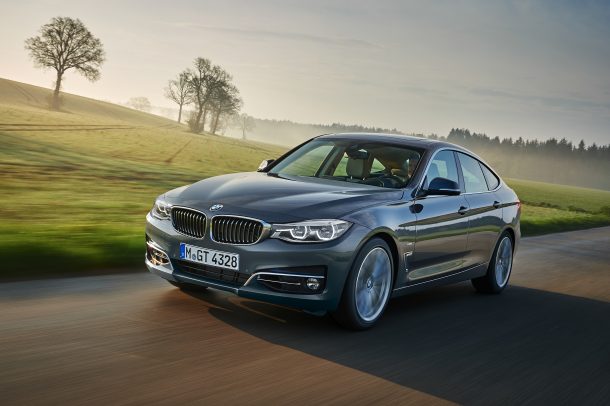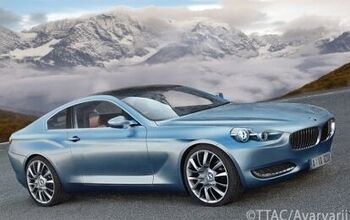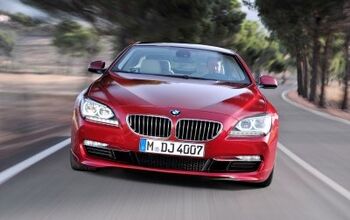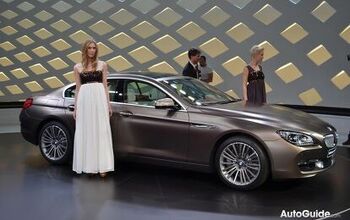RIP: BMW 6 Series

Admit it — when you think of the BMW 6 Series, it’s the long prow of the mid-80s 633 or 635 CSi nosing into your brain, not the oddly-shaped 2019 640i xDrive Gran Turismo. That sleek Reagan-era coupe can continue to roam throughout your mind for years to come, as it won’t have any competition.
For the 2020 model year, the last bearers of the 6 Series designation fade from the American landscape, joined in their vanishing act by an unloved 3 Series four-door with a liftback.
The 3 and 6 Series Gran Turismos were recent introductions to the BMW lineup, donning four doors and a sloping hatchback body that upped the utility factor a bit while lowering sex appeal immensely. All-wheel drive came standard, but sales did not.
With a new 3 Series here and the resurrected 8 series taking the place of all things luxurious and sporty at the top end, the GTs and the 6 Series as a whole don’t make much sense. Like most automakers, BMW wants fewer build configurations and a leaner business. The 6 Series’ demise was foretold by the loss of the more traditional coupe and convertible variants, leaving only the GT and Gran Coupe (actually a sedan, regardless of what anyone says) as oddball pickings.
Not needed, BMW feels — the new 8 Series, in gran coupe, droptop, and coupe guise, will scratch the itch of high-end buyers looking for something exclusive and sexy.
The 6 Series Gran Coupe and 3 Series GT are already nowhere to be found on Bimmer’s consumer website, while the 6 Series GT remains listed as a 2019 model. July sales date shows the automaker moving just 80 6 Series vehicles in the U.S., with sales over the first seven months of the year down 58.4 percent. The disappearance is already well underway.
As for the 3 Series, the disappearance of the GT (first announced in May) probably won’t hurt the lineup in any significant way, what with the revamped 2020 sedan now available in 330i and M340i versions. 3 Series sales rose 6.5 percent, year over year, in July, though the model line’s year-to-date tally amounts to a 10.3 percent loss. We’ll have to wait and see if the new generation lifts the model’s fortunes over a longer term.
[Images: BMW]

More by Steph Willems
Latest Car Reviews
Read moreLatest Product Reviews
Read moreRecent Comments
- Michael Smith I drive 100-300 miles a day in new BMWs, Mercedes-Benzes, and GM SUVs. Some are already equipped with automatic braking.It's the first thing I turn off when I start the car.I've had experiences where (as the author notes) the system gave false alarms and stabbed the brake pedal, threatening my ability to control the car.Further, every driver encounters situations where, for example, legal following distance must be momentarily compromised in order to avoid a difficult situation. When the system intervenes, it disrupts the driver's plan of action. This can lead to a collision as the driver has to suddenly react not to his surroundings, but to the system.Not only is automatic braking an insult to skilled drivers, it's dangerous to everyone.
- Dave M. My hipster daughter is greatly into it. We watched the race together this weekend. It was interesting but I'm not devoted to it like she is. She'll be at the Austin race in October.
- Bd2 If I had time to watch other people driving, then I would go for LMP.
- Steve Biro There are 24 races on this year’s F1 schedule. And I guarantee you no more than two will be reasonably exciting, Meanwhile, F1’s reception for Andretti reveals the dark underbelly of the sport. I have followed F1 since the 1960s and, frankly, I am running out of interest. I’ll catch a race if it’s convenient but won’t bother DVRing them.



































Comments
Join the conversation
As someone wrote about the misnamed 3 Series GT and 5 Series GT; they look like your aunt Edna. I saw exactly one 640i xDrive 4.0 Gran Turismo on the road a few weeks ago. I thought, "Wow that exists here in the states. However I do see plenty of 6 series coupes, convertibles and Gran Coupes around. Personally I like the 4 Series Gran Coupe since its is an attractive, lean nicely balanced sport hatch. It’s a nice practical alternative to the bloated CUV’s like the 4 door hatch on stilts X4 and X6.
Funny how this posse is going to cream themselves over a VW GTI or some 2.0-bearing SUV contraption and yet a 640GT is faster and quieter and the best second hand value out there.